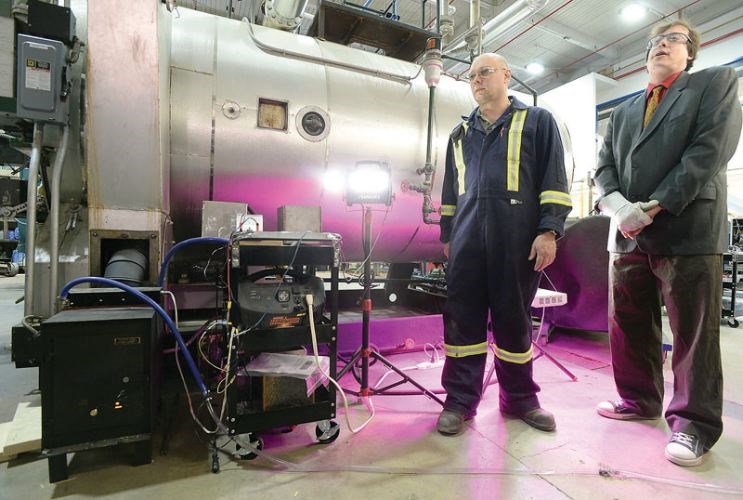College of New Caledonia researchers have turned $20,000 into wood stove-generated electricity.
On Wednesday, the school's applied research and innovation department unveiled the results of a six-month long project using new technology to produce power from the heat of a wood stove.
Funded by a grant from the Omenica Beetle Action Coalition, the thermoelectric generators showed electric current can be produced from any hot surface. That has the potential for a wide range of uses, including power recovery in cars and charging electronic devices in the backcountry.
The project was geared towards application in the greenhouse industry and wood stoves have an advantage over solar panels since they can generate electricity continuously at night and in winter days with reduced sunlight, explained CNC electronics instructor Oro Barton.
But researchers also hope the innovation would have practical applications for the average user.
"If you've got wood heat in your house you'll be able to cut back on your power usage consumption on your power bill," said Stephen Davis, CNC power engineering program co-ordinator.
During a demonstration at the school's tech centre, Barton and Davis plugged a variety of lights into the battery charged by the wood stove, explaining that unit makes about 40 watts of electricity continuously and would add up roughly a kilowatt over the course of a day.
"So right now this one unit would make about 10 per cent of the power that you'd need to run a normal house," said Barton.
"You could run that for about four hours, recharge the battery over the course of the next day and night and you could run an extra four hours or so every day... That said, the electricity is not the only power output from this stove - if you use this stove in a cabin, you'll get hot water. That's something you would have to spend for electricity on but now you're not going to."
If the water is circulated to radiators, it could also provide central heating, he added.
The next steps are to find partners to build a stove that can really provide all of those services, Barton said.
"So we're really excited to work with people to teach them how to deploy this technology," he said.



